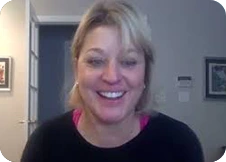A 15 or 30-year mortgage is what confuses most homebuyers. 90% of homebuyers opt for a 30-year fixed-rate mortgage. A 30-year mortgage offers plenty of time for repayment but is costly in the long run.
On the other hand, a 15-year mortgage incurs high monthly payments but overall saves a lot in interest payments. As of October 2023, the average 15-year mortgage rate is 7.03%, and the 30-year interest rate is 7.79%.
📉 15 vs. 30-year mortgage
- A 30-year mortgage is much more affordable as compared to a 15-year loan. This is because it carries lower monthly payments, allowing the borrower to manage their funds efficiently.
- Although the monthly payments on a 15-year mortgage are higher, the total cost of the loan is less in the long run.
- There are alternatives to 15- and 30-year mortgages like 10-year, 20-year, 40-year, and more.
Difference Between a 15-Year Mortgage and 30-Year Mortgage
In the case of a 15-year fixed mortgage, the borrower can amortize their mortgage at an early date. However, the monthly payments will be higher as compared to the 30-year mortgage. It’s a bit difficult to obtain a 15-year mortgage as it requires a lower DTI and higher income.
Here’s a free spreadsheet template on the amortization schedule:
Example of 15 vs. 30-Year Mortgage
There’s a notable difference between a 15-year mortgage and a 30-year mortgage. The below example shows the different options on a $300,000 loan with a $50,000 down payment. The interest rate assumed for a 15-year mortgage and a 30-year mortgage is 3.5% and 4.1% respectively.
| 30-Year Mortgage | 15-Year Mortgage |
| Purchase Price: $300,000 | Purchase Price: $300,000 |
| Down Payment: $50,000 | Down Payment: $50,000 |
| Loan Amount: $250,000 | Loan Amount: $250,000 |
| Interest Rate: 4.1% | Interest Rate: 3.5% |
| Monthly Payment: $1208 (Principal + Interest) | Monthly Payment: $1787 (Principal + Interest) |
| Total cost of mortgage: $484,880 including the down payment | Total cost of mortgage: $371,698 including the down payment |
As per the above example, a 15-year mortgage could save you more than $100,000 in interest payments.
Pros and Cons of a 15-Year Mortgage
Let’s understand the pros and cons of a 15-year mortgage:
| Pros | Cons |
| Early Homeownership: A 15-year mortgage allows you to become a homeowner in just 15 years. You’ll be debt-free sooner with a tangible asset at your disposal. | Higher Monthly Payments: Interest on a 15-year loan will have a higher monthly payment as it gets amortized quickly. |
| Save Thousands in Interest Payments: Lenders charge lower mortgage rates for 15 years. This saves thousands of dollars in interest payments as it’s easier to predict repayment over 15 years. | Hard to Qualify: A 15-year mortgage demands a higher monthly income and a lower DTI making it tough to qualify for. |
| Faster Equity Buildup: A 15-year mortgage allows you to build home equity quickly. You can also use it as a HELOC. |
Pros and Cons of a 30-Year Mortgage
Let’s understand the benefits and drawbacks of a 30-year mortgage:
| Pros | Cons |
| Low Monthly Payments: A 30-year mortgage offers lower monthly payments as you have more months to pay off the loan. However, you do pay more interest, but the overall monthly payment is still less than the 15-year mortgage. | High Interest Payments: The interest rate on a 30-year mortgage is higher as compared to the interest rate on a 15-year mortgage. This is because it takes twice the time for the lender’s money to amortize as compared to a 15-year mortgage. |
| Chance to Buy a Bigger Property: A 30-year mortgage would be a wiser option if you want to buy a bigger house. And since it requires more money, a 30-year mortgage would allow you to smoothly pay off that mortgage. |
How to Pay Your 30-Year Mortgage Early?
Here’s how you can pay your 30-year mortgage early:
- Extra Payments: You can make extra monthly payments if you have surplus cash. However, you must ensure that your mortgage agreement is exempt from the prepayment penalty.
- Bi-Weekly Payments: The biweekly payment option allows you to make one payment every two weeks, which adds up to 26 yearly payments. This way, you’ll pay 13 installments over the year and pay off your mortgage early.
- Mortgage Refinance: It’s better to refinance your mortgage only when you’re financially stronger. If you have a big promotion coming up or an inheritance, then you can refinance your mortgage to pay it off early.
Alternatives to 15 and 30-Year Mortgages
Various alternatives are available for 15- and 30-year mortgages.
- 10-Year Mortgage: This type of mortgage gets amortized over 10 years. However, most people don’t opt for it.
- 20-Year Mortgage: It can be useful for those who need more time than a 15-year loan but less than a 30-year loan.
- 40-Year Mortgage: This loan lasts for 40 years and is not as popular as the 15- or 30-year loan.
- Interest-only Mortgage: Here the borrower pays only interest for initial years. the principal is paid later, usually in lump sum. Most lenders don’t offer this type of mortgage.
15 vs. 30-Year Mortgage, What’s Better?
It’s advisable to do some calculations before going ahead with either of the mortgage terms. A 15-year loan is a better option to pay off the mortgage faster. But you will have to spend more on monthly payments.
Conversely, a 30-year loan offers lower monthly payments. This allows you to buy a larger home or save cash for other financial objectives.
Find Your New Home With Houzeo
With thousands of property listings, Houzeo.com is one of the biggest property listing sites in the US. Find condos, townhouses, co-ops, and other types of homes for sale on Houzeo.
» Need More Clarity? Read these exclusive Houzeo reviews and learn why the platform is the best in America’s competitive housing market.
Frequently Asked Questions
Is paying off a 30-year mortgage in 15 years the same as a 15-year mortgage?
No, you will pay the same amount in interest if both mortgages have the same interest rate and are repaid in 15 years.
Are additional payments automatically applied to the principal?
You can put the additional money into the principal when the payment amount is greater than the minimum required amount.
Is it worth it to refinance a 15-year mortgage?
Refinancing may be worth it if you intend to stay in the house for an extended period of time, can afford the higher monthly payment, and can afford the closing fees.
What are the average mortgage rates for 15 and 30-year mortgages?
Related: 30 year vs 15 year mortgage, 30 vs 15 year mortgage, average 15 year mortgage rate, 30 year mortgage interest rates, current 30 year mortgage rate, 30 years mortgage rates today, 30 year mortgages, what is the 30 year mortgage rate, interest rates on 30 year mortgage, 15 year fixed rate mortgage, 15-year mortgage rates, 15 year mortgage interest rates, what is 30 year mortgage rate, 30year mortgage rates, 15 year vs 30 year mortgage, 15 years mortgage rate, mortgage 15 year rates, mortgage 30 year, 30 year rate, how long is a mortgage, best 15 year mortgage rates, 15 year mortgage vs 30.




















.webp)
